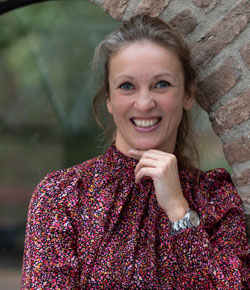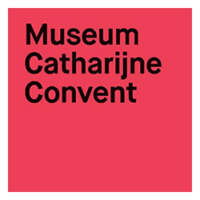HOME > VISITING > STUDY DAY ‘GOLD’ > MICHA LEEFLANG

Micha Leeflang

Micha Leeflang (1975) is a technical art-historian, specialized in the research with infrared reflectography. She received her Ph.D. from the University of Groningen in 2007. Her dissertation, entitled ‘Joos van Cleve, Uytnemende Schilder van Antwerpen’ dealed with the studio, production and working methods of the Antwerp painter Joos van Cleve (c. 1480-1540/41). Since 2007 she works as curator of medieval art at the Museum Catharijneconvent in Utrecht (Netherlands), where she is responsible for the collection of manuscripts, fifteenth- and sixteenth-century paintings, sculpture and liturgical vestments.
Among other exhibitions, she organized Masterly Manuscripts, The Middle Ages in Gold and Ink (2009); Surviving the Iconoclasm, Medieval sculpture from Utrecht, 1430-1530 (2012-2013); The secret of the Middle Ages in gold thread and silk (2015); Holy Scripture – Tanakh, Bible, Koran (2016); North & South, European masterpieces Reunited (2019-2020) and most recent Ode to Antwerpen – the Secrets of the Dutch Masters.
For more information: www.catharijneconvent.nl/
Purchase your tickets online!
Book your tickets quickly and easily online.
About the lecture
The art historical context of The Crucifixion by the Master of the Lamentation of Christ in Lindau (c. 1425)
The Crucifixion of the Master of the Lamentation of Christ in Lindau (ca. 1425), which is part or the collection of Museum Catharijneconvent, was in a bad condition in the museum depot for decades. Its paint was obscured with dirt and yellowed varnish. Furthermore, it contained many discolorations, darkened retouches and overpaints. The work has been restored by conservator Caroline van der Elst (between 2020-2023). The extensive conservation and research is partly made possible by The Rembrandt Foundation/ Vereniging Rembrandt (with thanks to the J.G. van Oord Fund): and during treatment the painting was part of the exhibition Body Language (2020-2021) and it was it was the starting point the focus presentation Hidden Gem (2021).
The biggest dilemma facing during the restoration process was the background: Mary, the crucified Christ and John are depicted against a dark blue background, provided with golden tendrils. The first investigation, however, showed that this background originally should have been golden: golden shining tendrils on a matte gold field (the matte gold was done in “tremolierung”, small scales, applied with a gouge). The blue azurite layer that remains visible today is old, but not original. During the conservation treatment we had to decide if the blue should be removed and if we return to the artist’s original intention, or to keep the layer and continue showing this part of the restoration history.
For this we needed more information on the art historical context: where can we originate the Master of the Lamentation of Christ in Lindau? Unknown master with ‘Notname’ (emergency name). Based on similarities in style, the work is attributed to the Master of the Lamentation of Christ in Lindau.
Golden backgrounds are characteristic of painting from the period 1300-1500, but little of this has been preserved. From Cologne (one of the main schools) only 344 work worldwide.
But where did the Master of Lindau actually worked: Cologne, Worms, Swabensee, Bodensee or elsewhere…
This presentation will deal with the art historical context of The Crucifixion by the Master of the Lamentation of Christ in Lindau.
Purchase your tickets online!
Book your tickets quickly and easily online.
SPLENDID HOSPITALITY
Give your guests a royal welcome at Huis Bergh Castle in ‘s-Heerenberg, with flags flying, a royal reception on the drawbridge and a warm welcome in the majestic entrance hall.



